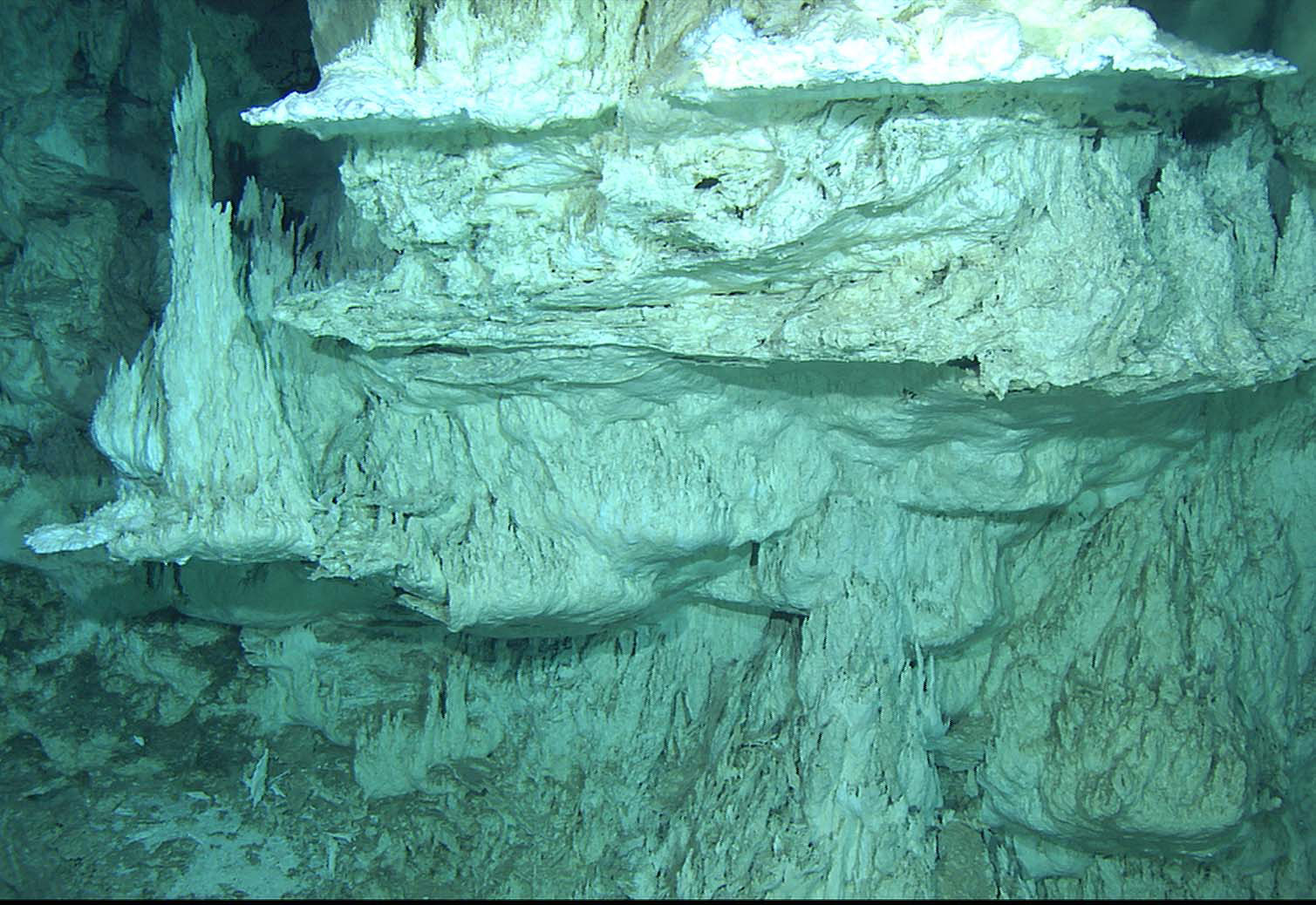Surprising newfound ocean bacteria could aid search for alien life
'This was never observed before in this type of environment.'

In the deep waters of Earth's oceans, scientists have discovered a new species of bacteria flourishing in the plumes from submarine hot springs.
Such hot springs likely also exist on oceanic worlds like Jupiter's moon Europa and the Saturn satellite Enceladus, so these observations sharpen our understanding of the forms alien life might take on those moons, astronomers say.
The newfound bacteria, Sulfurimonas pluma, belongs to a family of organisms that to date had only been known from volcanic vents on Earth's seafloors, as it cannot tolerate high oxygen levels in water elsewhere. So scientists were surprised to find a new member, smaller than its relatives, burgeoning in oxygen-rich water plumes hundreds of meters away from them.
Related: Alien-life hunters are eyeing icy ocean moons Europa and Enceladus
"It was a crescendo of excitement to see that these microorganisms were not only abundant but also highly active in the plume," Massimiliano Molari, a scientist at the Max Planck Institute for Marine Microbiology in Germany, told Space.com in an email. Molari was the lead author of the latest study, which found that S. pluma has gone through unique genetic changes that allows it to not only adapt but also thrive in a broad range of environments in Earth's oceans.
One of those genetic changes has made the bacterium capable of getting energy from many sources, which is why it is abundantly seen near hydrogen-rich vents at the seafloor as well as oxygen-rich plumes thousands of kilometers away, scientists say.
Researchers found that the organism mainly uses hydrogen to multiply and grow ubiquitously. "This was never observed before in this type of environment," Molari said.
Breaking space news, the latest updates on rocket launches, skywatching events and more!
The global presence of this flexible organism in Earth's oceans "removes an intellectual barrier from our ability to conceive that something comparable could arise elsewhere in the solar system," Chris German, a senior scientist at the Woods Hole Oceanographic Institution, told Space.com in an email. German was not involved in the study.
This is an exciting find, because NASA's Cassini mission, which studied Saturn and its moons from 2004 to 2017, found hydrogen in the jets erupting from Enceladus' south pole when it flew through them, suggesting active hydrogen-rich hydrothermal venting at the bottom of the moon's ocean, like those on Earth.
Hydrothermal vents form when cold, oxygen-rich seawater seeps into cracks in Earth's crust and hisses back out as soon as it meets the underlying hot magma. The heat triggers chemical reactions that remove oxygen from the water, so it returns to the ocean losing oxygen but gaining other minerals necessary for microbes to grow.
Scientists split what happens next into two stages: the resulting hot plume rises hundreds of meters upward from the seafloor until it runs out of steam. Then, the plume spreads horizontally for thousands of kilometers, during which time it becomes oxygenated, thanks to mixing with the surrounding oxygen-rich seawater.
Related: The search for alien life
Much of the microbial growth happens in the second stage, which is also where the study team found plentiful S. pluma in water samples collected from both Arctic and Antarctic oceans. The results from the latest study show that the microbe can survive in all parts of a hydrothermal plume across Earth's global ocean, according to Morgan Cable, who is a research scientist at NASA's Jet Propulsion Laboratory in California and is not involved with the study.
Astronomers expect a similar two-stage process from plumes of deep-sea volcanoes on the seafloors of Europa and Enceladus, although the dimensions and timescales may be different depending on the bodies' gravitational pull and how their ocean waters circulate.
So, if organisms like S. pluma exist in the oceans of these moons, the findings from this study "could mean the likelihood of detecting evidence of these organisms [...] is higher than previously thought," Cable said. "One thing we expect is that, if life is present at Europa or Enceladus, it will likely be many different organisms living in a biosphere."
Scientists hope those organisms will be detected by future missions that will search for life beyond Earth, including NASA's Europa Clipper, which will launch in 2024 to study Europa's habitability, and the Enceladus Orbilander, which will hunt for signs of life on that moon's surface.
Any life on these worlds is likely hidden below their icy surfaces. So it is important to consider where evidence for it might end up in a condition that left it recognizable for the spacecraft to find it, German said. The findings from the latest study show that S. pluma can survive all the way from its likely origin near seafloor vents to open waters in Earth's oceans, getting mixed into distinct chemical environments as part of the rising and spreading plume.
If a similar form of life is present on the ocean-harboring moons of our solar system, the study's results "tilt the odds in our favor that evidence of any life such seafloor vents fuel could be preserved, sufficiently intact, to make it to the top of the ocean and out onto the surface where we could hope to find it," German said.
The research is described in a paper published March 9 in the journal Nature Microbiology.
Follow Sharmila Kuthunur on Twitter @Sharmilakg. Follow us on Twitter @Spacedotcom and on Facebook.

Sharmila Kuthunur is an independent space journalist based in Bengaluru, India. Her work has also appeared in Scientific American, Science, Astronomy and Live Science, among other publications. She holds a master's degree in journalism from Northeastern University in Boston.
